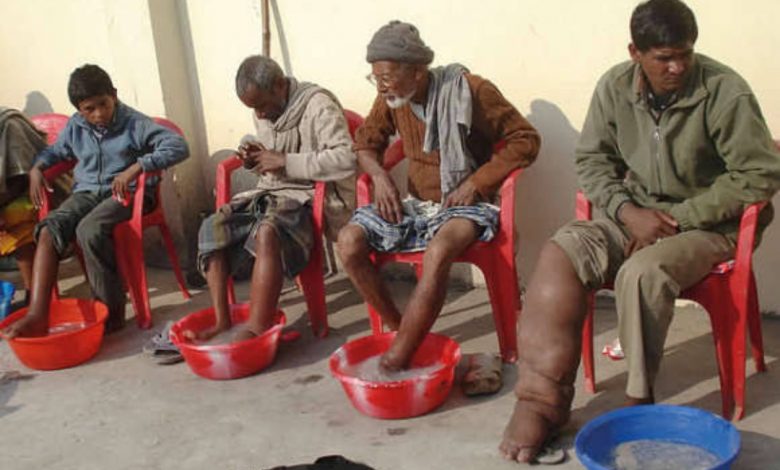FILARIASIS ENDEMICS IN INDIA

*
DIAGNOSIS
1) ICT CARD TEST..( Circulating Filarial antigen, CFA for W. Brancofti.)
2) THICK BLOOD SMEAR…( Microfilaremia for M.Perstans.)
3) LEISHMANIN SKIN TEST…(Delayed type hypersensitivity in LEISHMANIN.)
TREATMENT
Clean the affected area on a regular basis which shall help limit the symptoms of lymphatic filariasis.
Antibiotics are administered to patients for several weeks which help in curing the proliferation of elephantiasis worm.
Anti filaria drugs are effective in killing worms which have not yet attend adulthood.
Surgical operations are usually conducted in cases of scrotal,penis, viginal elephantiasis and hydrocel.
Manual lymph drainage is also a method that physicians used to pump out of the fluid out of the affected area.
Since mosquitoes are the vectors for the parasites that cause elephantiasis mosquito control is a vital step to stop transmission.
The recommended regimen for treatment of filariasis is mass drug administration (MDA) in which a single dose of two medicines are given together – albendazole (400 mg) with either ivermectin (150-200 mcg/kg) in areas where onchocerciasis (river blindness) is also endemic or diethylcarbamazine citrate (DEC) (6 mg/kg ).
PREVENTION AND CONTROL
Prevention and control depends upon
1 mosquito control 2. Chemotherapeutic control
Mosquito control includes clinical control by a spraying insecticides like DDT, Malathion etc.
Biological control- by the use of carnivorous bacteria ( bacillus sphaericus,strain1593) and carnivorous fish and spore forming bacteria.
Environmental control- by efficient drainage and sewage system to eliminate the mosquito breeding places.
Reduction of vector contact- by use of mosquito net and house screens.
2. Chemotherapeutic control is based on mass or selective treatment of the cases by administering DEC aur use of DEC medicated salt in the population exposed to filaria infections.



